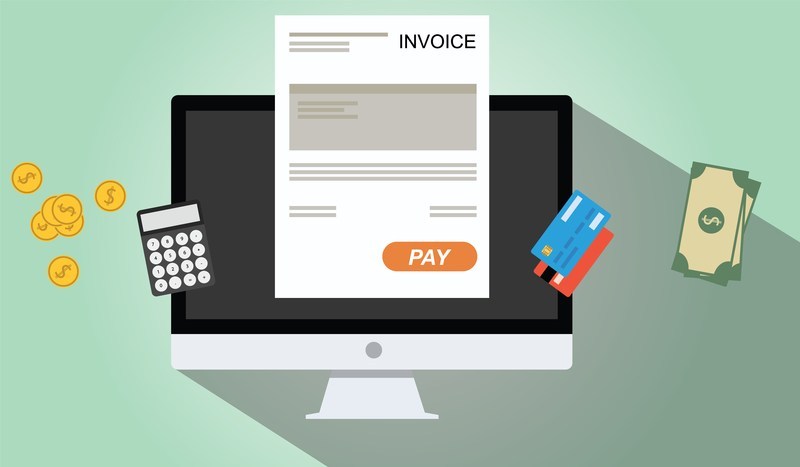
Using NetSuite for Effective Subscription Billing Management
Introduction
In today’s rapidly evolving digital landscape, many businesses are shifting towards subscription-based models to deliver ongoing services and generate predictable, recurring revenue streams. However, managing the complexities of subscription billing can be a daunting task, especially as businesses scale and customer bases grow. This is where NetSuite, a comprehensive cloud-based business management platform, comes into play. NetSuite offers a robust set of features specifically designed to streamline and automate the entire subscription billing process, from customer sign-up to revenue recognition.
In this blog post, we will take an in-depth look at how NetSuite can help businesses effectively manage their subscription billing operations and optimize their recurring revenue streams. We will explore the key challenges of subscription billing, dive into NetSuite’s powerful capabilities, and discuss best practices for leveraging NetSuite to its full potential. By the end of this post, you will have a clear understanding of how NetSuite can transform your subscription billing management and enable your business to thrive in the subscription economy.
Understanding the Challenges of Subscription Billing
Before we delve into the specifics of NetSuite’s subscription billing features, it is crucial to understand the unique challenges that businesses face when implementing and managing a subscription-based model.
Complex Billing Cycles and Pricing Models
One of the primary challenges of subscription billing is managing the various billing cycles and pricing models that customers may opt for. Businesses often offer multiple subscription plans with different billing frequencies, such as monthly, quarterly, or annually. Additionally, pricing models can vary from flat-rate pricing to usage-based pricing or tiered pricing structures. Managing these diverse billing cycles and pricing models manually can quickly become overwhelming and prone to errors, especially as the customer base expands.
Recurring Payment Processing
Another significant challenge is the recurring nature of subscription payments. Unlike one-time transactions, subscription billing requires businesses to securely store customer payment information and automatically process payments on a recurring basis. This involves integrating with payment gateways, handling payment failures, and ensuring PCI compliance to protect sensitive customer data. Manual payment processing can be time-consuming and error-prone, leading to missed payments and customer dissatisfaction.
Mid-Cycle Changes and Prorations
Subscription-based businesses must also handle mid-cycle changes gracefully. Customers may upgrade or downgrade their plans, pause or cancel their subscriptions, or make other changes that require prorated billing adjustments. Calculating accurate prorations and ensuring that customers are billed correctly for the services they receive can be complex, especially when dealing with a large volume of subscriptions.
Revenue Recognition and Accounting Compliance
Accurate revenue recognition is critical for subscription-based businesses to maintain financial integrity and comply with accounting standards such as ASC 606 and IFRS 15. Subscription revenue must be recognized over the service period, taking into account any discounts, promotions, or deferred revenue. Manually tracking and allocating revenue can be a daunting task, especially when dealing with a high volume of subscriptions and complex billing scenarios.
NetSuite’s Powerful Subscription Billing Capabilities
NetSuite recognizes the unique challenges faced by subscription-based businesses and offers a comprehensive suite of features designed to streamline and automate the entire subscription billing process. Let’s explore some of the key capabilities that make NetSuite a powerful solution for effective subscription billing management.
Centralized Subscription Management
NetSuite provides a centralized platform to manage all aspects of subscriptions in one place. With NetSuite’s subscription management features, businesses can easily create and configure subscription plans, define pricing models, and set billing frequencies. NetSuite supports a wide range of pricing structures, including flat-rate pricing, usage-based pricing, and tiered pricing, allowing businesses to tailor their offerings to their specific needs.
The centralized subscription management also enables businesses to define trial periods, setup fees, and promotional discounts, providing flexibility in attracting and retaining customers. NetSuite’s intuitive interface makes it easy to manage subscriptions, view customer details, and track subscription status, ensuring a streamlined and efficient subscription management process.
Self-Service Customer Portal
NetSuite understands the importance of empowering customers to manage their own subscriptions, reducing the administrative burden on the business. The self-service customer portal allows customers to take control of their subscriptions, enhancing their experience and reducing support queries.
Through the self-service portal, customers can sign up for new subscriptions, view their current subscription details, and manage their account information. They can easily upgrade or downgrade their plans, update payment information, and access their billing history. This self-service functionality not only improves customer satisfaction but also frees up valuable time for the business to focus on other critical tasks.
Automated Recurring Billing
One of the most significant advantages of using NetSuite for subscription billing is the automation of recurring billing processes. NetSuite eliminates the need for manual invoicing and payment collection, saving time and reducing the risk of errors.
NetSuite can automatically generate invoices based on the defined billing frequency and send them to customers via email. It handles prorated billing for mid-cycle changes, ensuring that customers are charged accurately for the services they receive. NetSuite also calculates usage-based charges and applies any applicable discounts or promotions, streamlining the billing process.
Seamless Payment Integration
NetSuite seamlessly integrates with various payment gateways, enabling businesses to process recurring payments securely and efficiently. By storing customer payment information within NetSuite, businesses can automate the payment collection process and reduce the risk of payment failures.
When a customer’s billing cycle arrives, NetSuite automatically charges the customer’s stored payment method, whether it’s a credit card or bank account. This automated payment processing eliminates the need for manual intervention and ensures timely and accurate payment collection. NetSuite also provides robust payment failure management, with configurable retry attempts and automated customer notifications.
Built-in Revenue Recognition
NetSuite’s built-in revenue recognition functionality is a game-changer for subscription-based businesses. It ensures accurate financial reporting and helps businesses stay compliant with accounting standards such as ASC 606 and IFRS 15.
NetSuite automatically recognizes revenue based on the subscription term and handles deferred revenue calculations. It takes into account any discounts, promotions, or setup fees, ensuring that revenue is accurately allocated over the service period. This automated revenue recognition eliminates the need for manual calculations and reduces the risk of errors, providing reliable financial reporting.
Subscription Metrics and Reporting
NetSuite’s robust reporting capabilities provide valuable insights into the performance of subscription-based businesses. With real-time dashboards and customizable reports, businesses can track key subscription metrics and make data-driven decisions.
NetSuite enables businesses to monitor metrics such as monthly recurring revenue (MRR), customer churn rate, customer lifetime value (LTV), and more. These metrics provide a clear picture of the health and growth of the subscription business, allowing businesses to identify trends, optimize pricing strategies, and make informed decisions to drive success.
Benefits of Using NetSuite for Subscription Billing
By leveraging NetSuite’s powerful subscription billing capabilities, businesses can reap numerous benefits that go beyond just streamlining the billing process. Let’s explore some of the key advantages of using NetSuite for subscription billing management.
Improved Operational Efficiency
NetSuite automates many of the manual and time-consuming tasks associated with subscription billing, such as invoice generation, payment collection, and revenue recognition. This automation significantly reduces the administrative burden on the business, freeing up valuable time and resources that can be focused on more strategic initiatives.
With NetSuite’s centralized subscription management, businesses can efficiently handle a large volume of subscriptions, minimizing the risk of errors and ensuring accuracy in billing and revenue recognition. The streamlined processes enabled by NetSuite lead to improved operational efficiency, allowing businesses to scale their subscription offerings with ease.
Enhanced Customer Experience
NetSuite’s self-service customer portal plays a vital role in enhancing the customer experience. By empowering customers to manage their own subscriptions, businesses can provide a seamless and convenient experience that meets the expectations of today’s digital-savvy consumers.
Customers appreciate the ability to control their subscriptions, view billing history, and make changes on their own terms. The self-service portal reduces the need for customers to contact support for routine tasks, leading to faster resolution times and increased customer satisfaction. Happy customers are more likely to remain loyal to the business and recommend the service to others, driving growth and long-term success.
Accurate Financial Reporting and Compliance
NetSuite’s built-in revenue recognition functionality ensures accurate financial reporting and helps businesses stay compliant with accounting standards. By automating revenue recognition, NetSuite eliminates the need for manual calculations and reduces the risk of errors.
Accurate financial reporting is crucial for making informed business decisions, attracting investors, and maintaining regulatory compliance. With NetSuite, businesses can have confidence in their financial statements, knowing that revenue is being recognized correctly and in accordance with applicable accounting standards. This level of accuracy and compliance provides peace of mind and enables businesses to focus on growth and innovation.
Scalability and Flexibility
NetSuite’s subscription billing features are designed to scale with the business, accommodating growth and changing needs. As the customer base expands and the volume of subscriptions increases, NetSuite can handle the increased billing volume efficiently, without compromising performance or accuracy.
NetSuite’s flexible pricing and billing options allow businesses to adapt to evolving market demands and customer preferences. Whether a business needs to introduce new pricing models, offer promotional discounts, or modify subscription plans, NetSuite provides the flexibility to make these changes easily and quickly. This adaptability enables businesses to stay agile and responsive in a dynamic market.
Actionable Insights and Data-Driven Decisions
NetSuite’s powerful reporting capabilities provide businesses with actionable insights into their subscription performance. With real-time dashboards and customizable reports, businesses can access valuable data that enables them to make informed decisions and optimize their subscription strategies.
By monitoring key subscription metrics such as MRR, churn rate, and LTV, businesses can identify trends, spot opportunities for improvement, and make data-driven decisions to drive growth. NetSuite’s reporting features also enable businesses to segment their customer base, analyze customer behavior, and personalize their offerings to better meet customer needs.
Getting Started with NetSuite Subscription Billing
To start leveraging the power of NetSuite’s subscription billing capabilities, businesses need to follow a few key steps to set up and configure their NetSuite account. Let’s walk through the process of getting started with NetSuite subscription billing.
Define Subscription Plans and Pricing Models
The first step in setting up NetSuite subscription billing is to define the subscription plans and pricing models that the business will offer. This involves determining the features and benefits included in each plan, setting the pricing structure (flat-rate, usage-based, or tiered), and establishing the billing frequencies (monthly, quarterly, annually, etc.).
Businesses should carefully consider their target market, competitive landscape, and revenue goals when defining their subscription plans. It’s essential to strike a balance between offering value to customers and ensuring profitability for the business.
Set Up Payment Processing
To enable recurring payments, businesses need to integrate their preferred payment gateway with NetSuite. NetSuite supports a wide range of payment gateways, allowing businesses to choose the one that best fits their needs.
Setting up payment processing involves configuring the payment gateway settings within NetSuite, ensuring that the necessary security measures are in place to protect customer payment information. This step is critical to ensure smooth and secure payment collection.
Customize the Self-Service Portal
NetSuite’s self-service customer portal can be customized to align with the business’s branding and specific requirements. Businesses can configure the available options for customers, such as plan upgrades, payment method updates, and billing history access.
Customizing the self-service portal involves designing the user interface, defining the navigation structure, and ensuring a seamless user experience. By tailoring the portal to the business’s needs, customers can easily manage their subscriptions and access the information they need.
Configure Revenue Recognition Rules
To ensure accurate financial reporting, businesses need to configure revenue recognition rules within NetSuite based on their subscription model and applicable accounting standards. This involves defining the revenue recognition criteria, setting up deferred revenue accounts, and establishing the appropriate revenue allocation methods.
Configuring revenue recognition rules requires a clear understanding of the business’s subscription offerings and the relevant accounting guidelines. It’s crucial to work closely with the finance and accounting teams to ensure that the rules align with the business’s financial reporting requirements.
Train the Team
To maximize the benefits of NetSuite subscription billing, it’s essential to provide comprehensive training to the billing and finance teams. The team should be well-versed in using NetSuite’s subscription billing features, handling customer inquiries, and managing the billing process effectively.
Training should cover topics such as creating and managing subscriptions, processing payments, handling mid-cycle changes, and generating reports. By equipping the team with the necessary knowledge and skills, businesses can ensure a smooth transition to NetSuite subscription billing and optimize their operations.
Best Practices for Effective Subscription Billing Management
To fully leverage the power of NetSuite subscription billing and drive success, businesses should follow best practices that optimize their subscription management processes. Let’s explore some key best practices that can help businesses effectively manage their subscription billing operations.
Keep Subscription Plans Simple and Transparent
While offering a variety of subscription plans can cater to different customer needs, it’s essential to keep the plans simple and easy to understand. Overwhelming customers with too many options or complex pricing structures can lead to confusion and hesitation in making a purchase decision.
Businesses should strive for transparency in their subscription plans, clearly communicating the features, benefits, and pricing associated with each plan. By providing clear and concise information, businesses can help customers make informed decisions and build trust in the subscription offering.
Offer Flexible Billing Frequencies
Providing customers with the flexibility to choose their preferred billing frequency can improve customer satisfaction and reduce churn. Some customers may prefer monthly billing for budgeting purposes, while others may opt for annual billing to take advantage of discounts.
By offering multiple billing frequencies, businesses can cater to different customer preferences and enhance the overall customer experience. NetSuite’s subscription billing features make it easy to accommodate various billing frequencies, ensuring that customers have the flexibility they desire.
Communicate Proactively with Customers
Effective communication is key to building strong relationships with subscription customers. Businesses should proactively communicate with customers about upcoming payments, plan changes, and any other relevant updates.
NetSuite enables businesses to set up automated email notifications for various subscription-related events, such as payment reminders, subscription renewals, and plan upgrades. By keeping customers informed and engaged, businesses can foster loyalty and reduce the likelihood of churn.
Monitor and Analyze Subscription Metrics
Regularly monitoring and analyzing subscription metrics is crucial for making data-driven decisions and optimizing the subscription business. NetSuite provides real-time dashboards and reports that enable businesses to track key metrics such as MRR, churn rate, LTV, and more.
By closely monitoring these metrics, businesses can identify trends, spot potential issues, and make informed decisions to improve their subscription offerings. Regular analysis of subscription data can help businesses identify opportunities for growth, optimize pricing strategies, and enhance the overall customer experience.
Provide Exceptional Customer Support
Providing exceptional customer support is essential for building long-term relationships with subscription customers. Businesses should prioritize prompt and effective resolution of customer inquiries and issues related to their subscriptions.
NetSuite’s subscription billing features, such as the self-service portal and automated notifications, can help reduce the volume of support queries. However, when customers do need assistance, businesses should ensure that their support team is well-equipped to handle subscription-related inquiries efficiently and professionally.
By delivering a high level of customer support, businesses can build trust, foster loyalty, and create a positive reputation in the market.
Conclusion
NetSuite’s subscription billing capabilities offer a powerful solution for businesses looking to streamline their recurring billing processes and optimize their subscription revenue streams. By automating critical tasks, providing self-service options for customers, and ensuring accurate financial reporting, NetSuite empowers businesses to focus on growth and customer satisfaction.
The challenges of subscription billing, such as managing complex billing cycles, processing recurring payments, handling mid-cycle changes, and ensuring revenue recognition compliance, can be effectively addressed using NetSuite’s comprehensive suite of features. From centralized subscription management to automated recurring billing, seamless payment integration to built-in revenue recognition, NetSuite provides the tools businesses need to succeed in the subscription economy.
By leveraging NetSuite’s subscription billing capabilities and following best practices, businesses can reap numerous benefits, including improved operational efficiency, enhanced customer experience, accurate financial reporting, scalability, and actionable insights. These benefits enable businesses to make data-driven decisions, optimize their subscription strategies, and drive long-term success.
As the subscription economy continues to grow and evolve, businesses that embrace effective subscription billing management will be well-positioned to thrive. By partnering with NetSuite and harnessing its powerful subscription billing features, businesses can navigate the complexities of recurring revenue models and unlock new opportunities for growth and profitability.
Get in Touch
We know what NetSuite can do and how it can help you. Schedule your free NetSuite assessment today
FAQs:
NetSuite’s subscription billing feature is a set of tools and capabilities designed to manage recurring billing processes for subscription-based businesses. It simplifies tasks such as automated invoicing, recurring payment collection, revenue recognition, and subscription management. This is crucial for businesses to ensure operational efficiency, reduce manual errors, and provide a seamless experience to their customers.
NetSuite supports a wide range of billing cycles (monthly, quarterly, annually) and pricing models (flat-rate, usage-based, tiered pricing). It allows businesses to configure custom subscription plans, automate invoicing for different billing periods, and manage pricing adjustments effortlessly. This flexibility ensures businesses can cater to diverse customer needs without additional manual effort.
Yes, NetSuite is designed to handle mid-cycle changes such as upgrades, downgrades, or cancellations. It automates prorated billing adjustments based on the subscription changes, ensuring customers are billed accurately for the services they use without creating administrative burdens for the business.
NetSuite integrates seamlessly with various payment gateways to automate recurring payment collection. Once customer payment information is securely stored, NetSuite processes payments automatically based on the billing cycle. It also manages payment retries for failed transactions and sends automated notifications to customers, ensuring consistent cash flow and customer satisfaction.
NetSuite includes built-in revenue recognition functionality that adheres to accounting standards such as ASC 606 and IFRS 15. It automates revenue allocation over the service period, taking into account discounts, promotions, and deferred revenue. This ensures accurate financial reporting and compliance with regulatory requirements.
The self-service portal empowers customers to manage their subscriptions independently. They can update payment details, view billing history, and modify their plans (upgrade, downgrade, or cancel) without contacting support. This improves customer satisfaction, reduces support workload, and provides a more seamless user experience.
NetSuite offers real-time dashboards and customizable reports that provide insights into key subscription metrics like Monthly Recurring Revenue (MRR), customer churn rate, and Customer Lifetime Value (LTV). These analytics help businesses identify trends, optimize pricing strategies, and make informed decisions to enhance subscription performance.
Yes, NetSuite allows businesses to configure promotional discounts, setup fees, and trial periods within their subscription plans. These features can be tailored to attract and retain customers while ensuring that billing processes remain accurate and automated.
NetSuite’s flexible and centralized subscription management system is designed to handle increased billing volumes as businesses grow. It accommodates complex pricing models, diverse subscription plans, and a growing customer base without compromising performance or accuracy, making it ideal for scaling operations.
To start using NetSuite for subscription billing, businesses should:
- Define subscription plans and pricing models.
- Integrate their preferred payment gateway.
- Configure the self-service customer portal.
- Set up revenue recognition rules for compliance.
- Train their team on using NetSuite effectively.
These steps ensure a smooth implementation and enable businesses to leverage the platform’s full capabilities.








